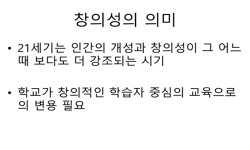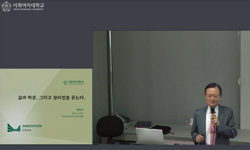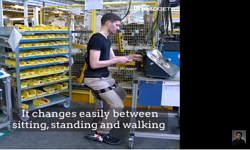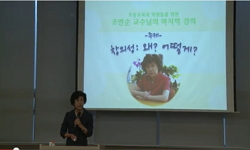20세기 들어 산업화 과정에서 본격적으로 발전하기 시작했던 이탈리아 디자인은 사회 역사적 특수성 속에서 전후 사회 비판적 매체로 영역을 넓혀가기 시작했다. 이탈리아 산업화의 초기 단...
http://chineseinput.net/에서 pinyin(병음)방식으로 중국어를 변환할 수 있습니다.
변환된 중국어를 복사하여 사용하시면 됩니다.
- 中文 을 입력하시려면 zhongwen을 입력하시고 space를누르시면됩니다.
- 北京 을 입력하시려면 beijing을 입력하시고 space를 누르시면 됩니다.

창의성과 융합: 2차 세계 대전 이후 이탈리아의 미술, 건축, 디자인의 상호 연관성을 중심으로 = Creativity and Convergence: Exploring the Interrelationship of Art, Architecture, and Design in Italy after World War II
한글로보기https://www.riss.kr/link?id=A109102936
- 저자
- 발행기관
- 학술지명
- 권호사항
-
발행연도
2024
-
작성언어
-
-
주제어
이탈리아 디자인 ; 창의성 ; 이탈리아 미래주의 ; 이성주의 건축 ; 알키미아 ; Italian Design ; Creativity ; Italian Futurism ; Rationalist Architecture ; Alchimia
-
KDC
300
-
등재정보
KCI등재
-
자료형태
학술저널
-
수록면
99-125(27쪽)
- 제공처
-
0
상세조회 -
0
다운로드
부가정보
국문 초록 (Abstract)
20세기 들어 산업화 과정에서 본격적으로 발전하기 시작했던 이탈리아 디자인은 사회 역사적 특수성 속에서 전후 사회 비판적 매체로 영역을 넓혀가기 시작했다. 이탈리아 산업화의 초기 단계에서 등장했던 사회 계몽적 목적을 지닌 창의적 표현의 다양성이나 기술적 한계에서 비롯된 미니멀리즘적 표현의 간결성은 전후 표현의 자유로운 활용의 토대를 제공했다. 또한 전후부터 1970년대까지 이탈리아 디자인은 산업화의 역량으로 다뤄졌던 창의성을 사회 다양성과 결합했으며, 주거와 디자인의 유기적 관계를 통해 이탈리아 인들의 라이프 스타일, 즉 사회 정체성을 담은 도구로 변화시켰다. 특히 재건 과정에서 낙관적 유토피아와 사회적 디스토피아에 대한 관점을 토대로 상품의 희소성을 부여하던 디자인은 사회 비판적 매체로 변화되었고, 이 같은 특성은 뉴욕 현대 미술관에서 개최된 전시 <이탈리아: 새로운 주거의 풍경>의 사례가 보여주는 것처럼 이탈리아 디자인의 특수성으로 인정받기 시작했다. 이런 점은 1980년대 알키미아 그룹의 사례를 통해서 더 확장되었으며, 메이드 인 이탈리아라는 개념을 토대로 사회적 가치와 소통하는 예술적 디자인이라는 사회적 인식을 만들어냈다.
다국어 초록 (Multilingual Abstract)
In the process of industrialization that began to develop significantly in the 20th century, Italian design expanded its scope as a critical medium in post-war society within its social and historical context. The diversity of creative expressions imb...
In the process of industrialization that began to develop significantly in the 20th century, Italian design expanded its scope as a critical medium in post-war society within its social and historical context. The diversity of creative expressions imbued with socio-enlightening purposes such as futurism during the early stages of Italian industrialization, and the conciseness of minimalist expressions noted by rationalism in architecture influenced by technical limitations laid the foundation for the unrestricted utilization of artistic forms before and after World War II. Moreover, the initial transformations from the preto early 1970s intertwined the creative demands formerly solicited by Italian design with social diversity, transforming design into a tool encapsulating Italian lifestyle and social identity through the organic relationship between habitation and design.
During the reconstruction period, industrial design, amalgamating functionality with aesthetic expressions, transitioned to a socio-critical medium, reflecting a spectrum of perspectives on utopia and dystopia. This evolution is exemplified by exhibitions like 'Italy: The Domestic Landscapes' held at the Museum of Modern Art in New York. The acknowledgment of Italian design's distinctiveness gained traction, particularly exemplified by movements like Alchimia in the 1980s. It further cultivates a societal perception of design as art that engages with and communicates social values under the concept of ‘Made in Italy.’
동일학술지(권/호) 다른 논문
-
미노슈 샤피크의 신(新)사회계약론 탐구: 유럽그린딜에의 함의
- 한국외국어대학교 EU연구소
- 김면회 ( Myeon Hoei Kim )
- 2024
- KCI등재
-
한-아이슬란드 친환경 전기 소형 어선 협력 가능성과 문제점
- 한국외국어대학교 EU연구소
- 유지원 ( Jeewon Yoo )
- 2024
- KCI등재
-
중동유럽의 우경화: 발틱 3국의 유럽회의론 동일한 출발, 상이한 경로 및 엇갈린 결과
- 한국외국어대학교 EU연구소
- 송병준 ( Song Byung Joon )
- 2024
- KCI등재
-
독일 연립정부 구성의 위기- 대안당의 부상과 정당 파편화를 중심으로
- 한국외국어대학교 EU연구소
- 정흥모 ( Jeong Heungmo )
- 2024
- KCI등재




 KCI
KCI KISS
KISS






